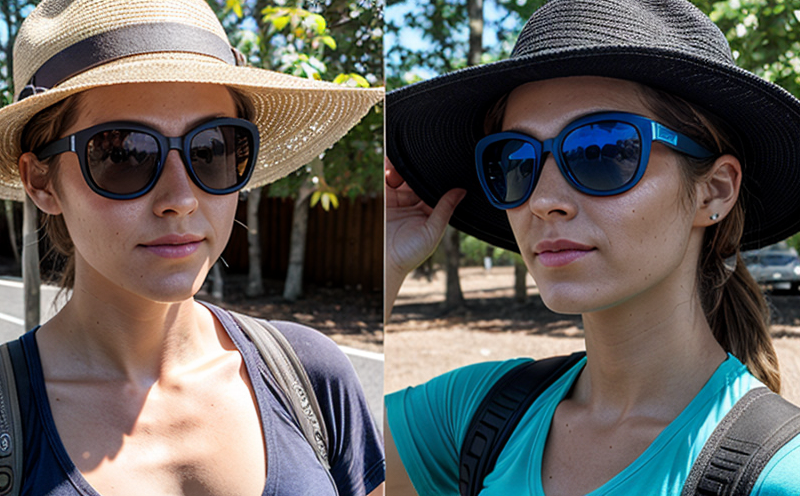Assessment of light transmission through laminated fabrics
The assessment of light transmission through laminated fabrics is a critical aspect in textile manufacturing and design, particularly when the goal is to enhance UV protection or improve visual comfort. This service ensures that materials meet specific standards for light transmission while also providing enhanced barrier properties against harmful ultraviolet rays.
Laminated fabrics are composite structures made by bonding two or more layers of different materials together to achieve desired performance characteristics. These composites often combine high-performance polymers, metals, or other advanced materials with traditional textiles like cotton or polyester. The resulting fabrics offer superior durability, breathability, and UV resistance compared to single-layered alternatives.
The process begins with careful selection of raw materials based on intended end-use applications. For instance, when developing protective clothing for outdoor workers exposed to prolonged sunlight, it's essential to choose fabrics that block a significant portion of direct sunlight while still allowing some light transmission to maintain visibility and comfort.
Once the fabric composition has been determined, samples are prepared according to ISO 12737-2 (Textiles—Lightfastness to artificial light sources—Part 2: Test methods) for standardized testing. Samples must be cut from various locations within each batch of material to ensure representative results.
Testing is conducted using specialized equipment such as integrating spheres and photometers calibrated per ASTM E1343 (Standard Practice for Selecting Photometric Instruments for Measuring Light Transmission Through Transparent Materials). The device measures the amount of light that passes through the sample both before and after exposure to simulated sunlight.
Acceptance criteria vary depending on intended use but typically require at least 95% reduction in visible light transmission post-exposure. This ensures that even if some minor degradation occurs over time, workers remain adequately protected from UV radiation without being blinded by excessive internal illumination levels.
In addition to basic light transmission measurement, advanced techniques like Fourier transform infrared spectroscopy (FTIR) may be employed during development stages to analyze changes in molecular structure caused by prolonged exposure. Such data helps fine-tune formulations for optimal performance under real-world conditions.
Compliance with international standards is crucial when designing products intended for global markets. For example, EN 13758-2 specifies requirements for protective clothing against solar radiation, which includes specific light transmission limits based on the type of fabric used and its intended application area (e.g., agriculture vs construction).
- Outdoor workers
- Military personnel operating in sunny climates
- Hikers seeking better visibility without sacrificing safety
- Fashion designers looking to create stylish yet functional garments





